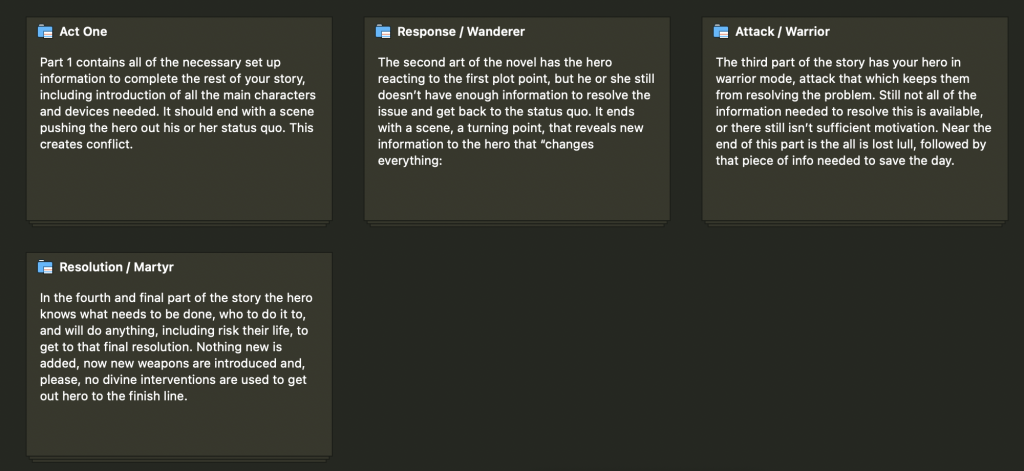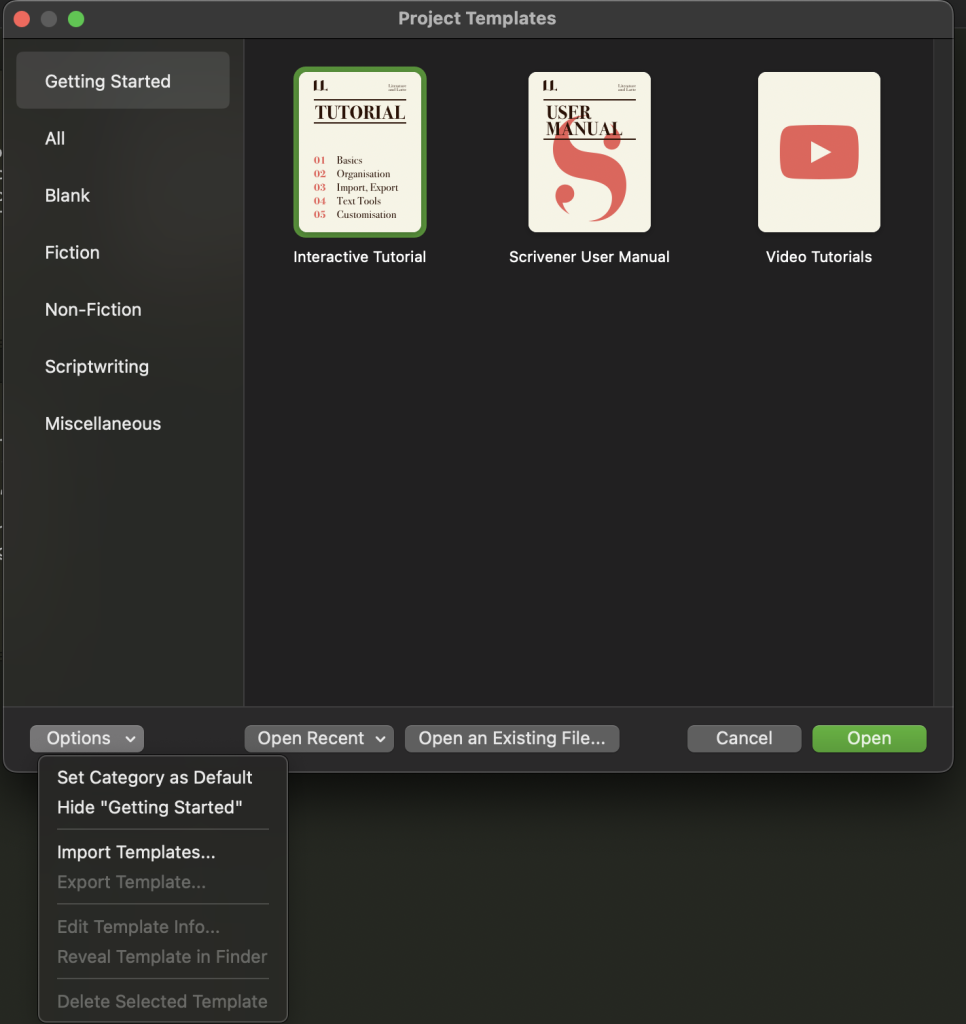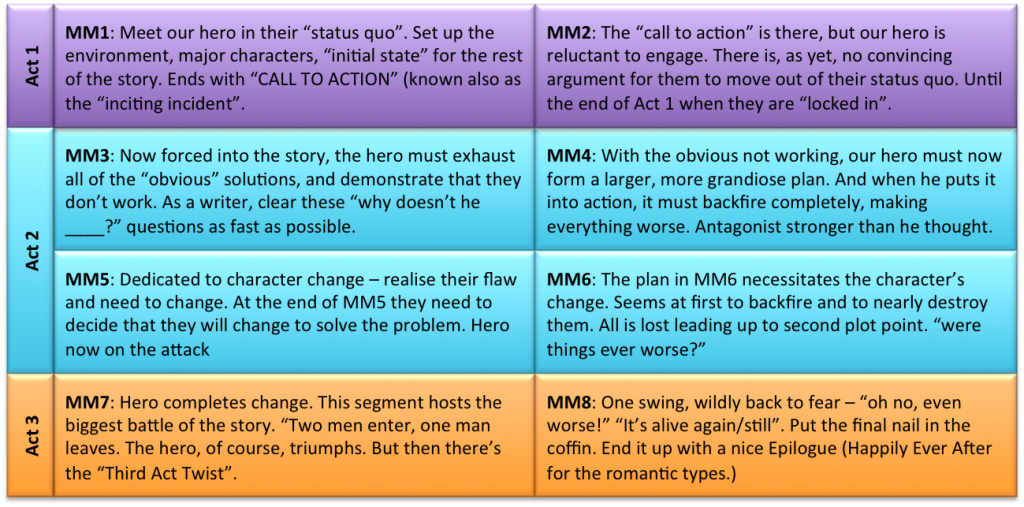I use a couple of different templates when I’m writing. One, a 4-part novel template for Scrivener, has been linked by several websites and unfortunately, that link now goes nowhere.
This is/will be the new landing post for templates. They generally follow the structure I talk about elsewhere on this site.

You need to right-click this link (don’t click it. It won’t do you any good) and save the file in a location you can’t forget (let’s go for desktop, for now).
When you start a new Scrivener project, you’re presented with a window that allows you to select a template. The bottom left of that window is an “Options” button that allows you to import a template:

Navigate to the Desktop (or wherever you’ve saved the download) and select the template. It’ll be an option (under Fiction) going forward.
I also use an 8-part “mini-movie” template when writing screenplays. It’s a bit more streamlined than the 4-part (counter-intuitively) because I’m not breaking it into chapters.

If you’re interested, right-click here and follow the directions above.
REMEMBER: Right-click and save. Don’t just click on the link.
If you’ve got any questions, please drop a comment below.